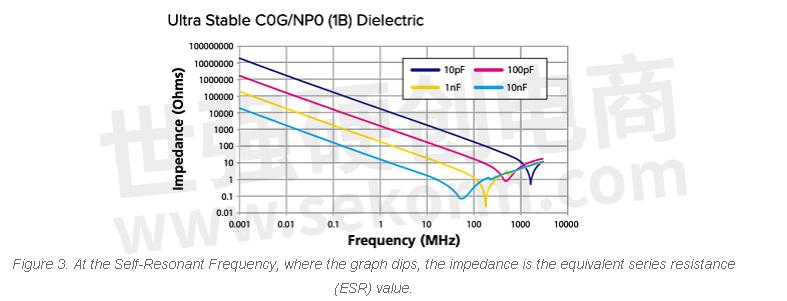Impedance: Examining the Opposition

Impedance, measured in ohms, extends the concept of “opposition” to alternating current (AC) applications. It accounts for resistance, the opposition of current flow, and reactance, the measure of opposing alternating current – an effect of inductance and/or capacitance. In direct current (DC) applications, we talk in terms of resistance, not reactance. Chances are: This isn’t new information. But there’s a reason Knowles wanted to cover this topic – impedance values play an important role in capacitor selection.
Impedance (Z) can be expressed in a number of different ways. In Figure 1, impedance is shown as a complex number, where “R” represents resistance, “X” is reactance, and “j” is the imaginary number √(-1):

Connecting Capacitance and Impedance
Unlike reactance (X), which flows in two directions to represent AC current flow, resistance (R) flows in a single direction. Resistors in a circuit (implementing resistance) have voltage drops across them and dissipate power in the form of heat, while reactance stores energy as an electric field. Capacitors store that electrical energy for a temporary period. In the time domain, voltage lags behind the current by 90 degrees. So, in a circuit that includes a voltage source and a capacitor, maximum current flow occurs right when the circuit is connected because, at this point, the capacitor is empty. Current flow approaches 0 amperes as the capacitor gets closer and closer to its maximum capacity. At maximum capacity, the voltage of the capacitor is equal to the voltage source, and the capacitor starts to oppose current flow because the current can’t continue to flow by. Figure 2 demonstrates the 90-degree phase shift between voltage and current.

Impedance is critical to understanding current opposition at specific operating frequencies. As mentioned, impedance accounts for resistance and reactance – AC and DC – which is particularly important for those working with AC circuits. In AC circuits, capacitors can become controllers and regulators of electrical flow. Component selection often depends on a specified frequency, so it’s important to know these specifications from the start. As shown in Figure 3, impedance values also indicate where signals will be blocked (or not) in signal blocking and bypass applications.

- +1 Like
- Add to Favorites
Recommend
- Empower Expands E-CAP Silicon Capacitor Portfolio by Using the Most Advanced Trench Capacitor Technology, making a Breakthroughs in Density and Performance
- What Is a Cylindrical Supercapacitor?
- What are Flying Capacitors?
- Advantages and Disadvantages of Electric Double Layer Capacitors
- Supercapacitor Maintenance Considerations
- Capacitors for External Defibrillators
- Fundamental Capacitor Functions in the World of Electronics
- How Does the Button Fara Capacitor Work?
This document is provided by Sekorm Platform for VIP exclusive service. The copyright is owned by Sekorm. Without authorization, any medias, websites or individual are not allowed to reprint. When authorizing the reprint, the link of www.sekorm.com must be indicated.






























































































































































































































































































































































































































































































































































































































































































































































































































































































